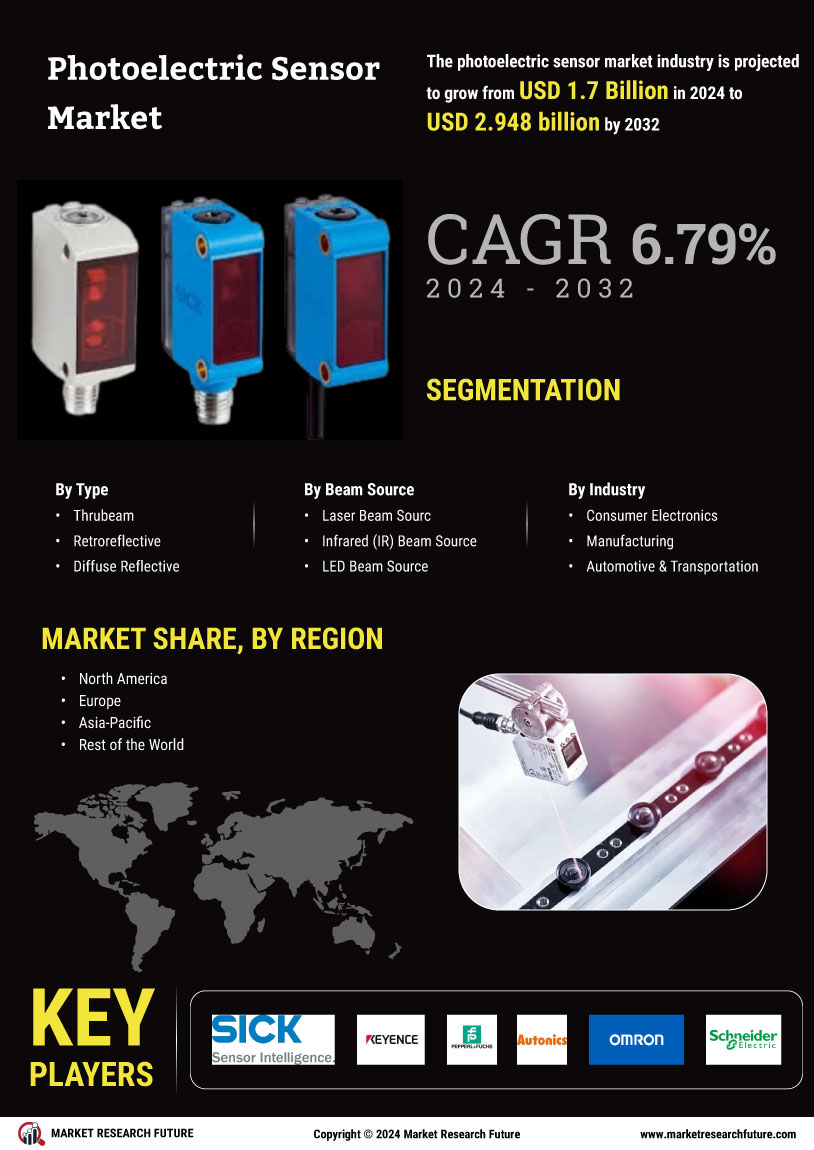Photoelectric Sensor Market
Photoelectric Sensor Market Research Report Information By Type (Thrubeam, Retroreflective, Diffuse Reflective, Focused Beam Reflective, Small Spot Definite Reflective, Fixed Distance, and Others), By Beam Source (Laser Beam Source, Infrared (IR) Beam Source, and LED Beam Source), By Industry (Consumer Electronics, Manufacturing, Automotive & Transportation, Food & Beverage, Healthcare, Power & Utilities and others) And By Region (North America, Europe, Asia-Pacific and Rest Of The World)– Industry Size, Share and Trends 2032
Photoelectric Sensor Market Trends
The expansion of the food and beverage industry is driving market growth
The food and beverage industry emphasizes several factors, such as maintaining product quality, following and tracing products, and ensuring products are safe while packaging. As a result, there is an increase in the need for sensors to keep an eye on crates on conveyor belts, perform precise position sensing of loaded carts, and maintain hygienic environments. The food and beverage industry's expanding need for packaging solutions has increased productivity, increasing demand for smart sensors in manufacturing facilities.
In the food and beverage industry, sensors are used to measure food items precisely and to detect transport crates on conveyor belts, loading carts in precise locations, storage container levels, and level monitoring. The need for precise output sensors is rising steadily across various industries. These sensors should be capable of detecting objects of various sizes and sensing various materials. They should be durable, cost-effective, and have long-sensing ranges. The demand for these photoelectric sensors is constantly rising as manufacturers strive to increase production efficiency without compromising product quality. Huge losses could result from a production process flaw.
Due to this, producers have started incorporating photoelectric sensors into their assembly or production lines. For instance, the food and beverage industry uses photoelectric sensors to gauge product size, identify flaws, count small objects, and check for misaligned bottle caps.
Photoelectric sensors used in the printing and packaging industries can identify colors by separately detecting red, green, and blue light. They use light grids to monitor sizable areas. Photoelectric sensors are used in the transportation sector to assess the location and distance of objects. Robotic pickers or trucks used in logistics and material handling rely on photoelectric sensors to operate safely and effectively. These sensors are also used by automatic doors and elevators to count or detect the number of people present.
Because manufacturers emphasize boosting productivity and minimizing manual labor to stay competitive in the global market, photoelectric sensors are becoming more widely used in the industrial sector. Thus, driving the photoelectric sensor market revenue.
Market Segment Insights
Photoelectric Sensor Type Insights
The Photoelectric Sensor Market segmentation, based on type, includes thrubeam, retroreflective, diffuse reflectively, focused beam reflective, small spot definite reflective, and fixed distance. The retroreflective segment dominated the market, accounting for 40% of market revenue. Retroreflective photoelectric sensors are increasingly used in industrial manufacturing, pharmaceuticals, and medical applications, contributing to the retroreflective market's growth. The unaffected operation of these sensors is made possible by their straightforward wiring and optical axis adjustment controls or angle of the intended targets. In pharmaceutical and medical applications, retroreflective photoelectric sensors prevent empty tablet packaging.
Photoelectric Sensor Beam Source Insights
The Photoelectric Sensor Market segmentation, based on beam source, includes laser beam source, infrared (IR) beam source, and LED beam source. The laser beam source category generated the most income. The market has recently seen a rise in laser beam source photoelectric sensors. These sensors provide incredibly small, highly accurate laser spots for detecting tiny objects. Additionally, since reflectors are unnecessary, laser beam source photoelectric sensors are flexible to mount and require less maintenance. Thus, plant management, security, and surveillance applications increasingly use laser beam photoelectric sensors.
Figure 1: Photoelectric Sensor Market, by Beam Source, 2022 & 2032 (USD billion)
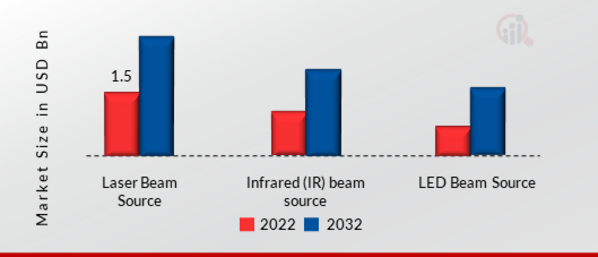
Source: Secondary Research, Primary Research, MRFR Database and Analyst Review
Photoelectric Sensor Industry Insights
The Photoelectric Sensor Market segmentation, based on industry, includes consumer electronics, manufacturing, automotive & transportation, food & beverage, healthcare/life science & pharmaceuticals, power & utilities, and others. The food & beverage segment generated the most income. The demand for photoelectric sensors is being fueled by the food and beverage industries' growing emphasis on technology and mechanical food processing to produce high-value food products. Additionally, standardization in all packaged foods and drinks is brought about by automation. It reduces human involvement, which renders food contamination impossible and guarantees that all health standards are met.
Regional Insights
By Region, the study provides market insights into North America, Europe, Asia-Pacific and the Rest of the World. The North American photoelectric sensor market area will dominate this market. The market for photoelectric sensors is expanding quickly due to end-user industries like consumer electronics, industrial, automotive, and textile, as well as the fact that photoelectric sensors themselves are used to increase the productivity of manufacturing setups because the data they collect can be compiled and used right away.
Further, the major countries studied in the market report are The U.S., Canada, German, France, the UK, Italy, Spain, China, Japan, India, Australia, South Korea, and Brazil.
Figure 2: Photoelectric Sensor Market SHARE BY REGION 2022 (%)
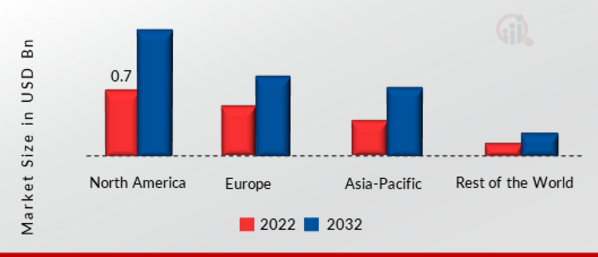
Source: Secondary Research, Primary Research, MRFR Database and Analyst Review
Europe’s photoelectric sensor market accounts for the second-largest market share. The government's increasing support through investments and initiatives will further accelerate the acceptance of photoelectric sensors in industrial manufacturing, boosting market revenues. The increased need for automation and robotics in the chemical, automotive, and pharmaceutical industries is fueling the demand for the product. Using robotics, automation, and cutting-edge sensors enables businesses to maintain manufacturing with minimal risks and little worker exposure to adverse situations, further impacting business growth.
Further, the German photoelectric sensor market held the largest market share, and the UK photoelectric sensor market was the fastest-growing market in the European region.
The Asia-Pacific Photoelectric Sensor Market is expected to grow at the fastest CAGR from 2023 to 2032. The surge in demand for automation solutions from photoelectric sensor-based packaging, food and beverage, industrial manufacturing, and automotive and transportation applications can be credited with the expansion of this market. Additionally, the growing market for photoelectric sensors in APAC has been given significant opportunities by the rise in nanotechnology demand. Moreover, China’s photoelectric sensor market held the largest market share, and the Indian photoelectric sensor market was the fastest-growing market in the Asia-Pacific region.
Key Players and Competitive Insights
Leading market players are investing heavily in research and development to expand their product lines, which will help the photoelectric sensor market grow even more. Market participants are also undertaking various strategic activities to expand their global footprint, with important market developments including new product launches, contractual agreements, mergers and acquisitions, higher investments, and collaboration with other organizations. The photoelectric sensor industry must offer cost-effective items to expand and survive in a more competitive and rising market climate.
Manufacturing locally to minimize operational costs is one of the key business tactics manufacturers use in the global photoelectric sensor industry to benefit clients and increase the market sector. In recent years, the photoelectric sensor industry has offered some of the most significant advantages.
Major players in the photoelectric sensor market, including Sick AG (Germany), wrangler sensoric GmbH (Germany), Keyence Corporation (Japan), Pepperl+Fuchs (Germany), Autonics Corporation (South Korea), Omron Corporation (Japan), Schneider Electric SE (France), Rockwell Automation Inc. (US), Panasonic Corporation (Japan), if Electronic GmbH (Germany), Banner Engineering Corp (US), Balluff GmbH (Germany), Contrinex AG (Switzerland), SensoPart Industriesensorik GmbH (Germany), Fargo Controls Inc (US), HTM Sensors (US), Leuze electronic GmbH + Co.
KG (Germany), Tri-Tronics (US), DoorKing Inc (US), DIS Sensors BV (Netherlands), Locon Sensor Systems Inc (US), Honeywell International Inc (US) and others, are attempting to increase market demand by investing in research and development operations.
Sick AG, A leading manufacturer of sensors and sensor solutions for industrial applications, is headquartered in Waldkirch (Breisgau), Germany. The company's spelling is SICK. Process automation and factory logistics, and these areas are active for the business. The company had sales of EUR 1,7 billion in 2020 and has approximately 10,344 employees worldwide. The business is particularly well-known for its laser scanners used as sensors in robotics, ports, and facility protection (security). The autonomous Stanley, which won the 2005 DARPA Grand Challenge, featured five Sick AG LIDARs for short-range detection.
These devices can be seen mounted on the roof of the car. On WAMbot, the autonomous vehicle that finished fourth in the MAGIC 2010 competition, SICK/IBEO LIDARs were also used for obstacle avoidance, mapping, and pedestrian tracking. SICK AG has consistently been listed as one of Germany's top employers.
HTM, Our sensor’s function. Many industries have developed and tested HTM sensors for many demanding applications. In addition to a long history of reliable performance, the products are supported by a robust warranty and industry approvals. Our staff makes choosing sensors simple. We do not have voicemails; a friendly voice answers the phone. A positive workplace culture results in contented employees who approach serving our customers positively. Our technical support team can address any inquiries about our products or offer a unique sensor solution. To assist you in locating the ideal solution, our customer service team is trained.
We are prepared to offer recommendations for items currently in stock, well-liked items at a lower cost, and high-performance items to address challenging applications.
Industry Developments
January 2022: Omron introduced E3AS Series TOF Photoelectric Sensors with a 1,500 mm sensing distance and a small size. Time-of-flight (TOF) detection and an antifouling coating are used by its state-of-the-art E3AS photoelectric sensors to deliver outstanding performance in the harshest environments.
January 2022: SICK AG collaborated with AutoCoding Systems (ACS), a supplier of software solutions. Through this alliance, SICK might be able to offer customers a bundle that combines its sensor technology and ACS's software platform.
Market Segmentation
Photoelectric Sensor Type Outlook
- Thrubeam
- Retroreflective
- Diffuse Reflective
- Focused Beam Reflective
- Small Spot Definite Reflective
- Fixed Distance
- Others
Photoelectric Sensor Industry Outlook
- Consumer Electronics
- Manufacturing
- Automotive & Transportation
- Food & Beverage
- Healthcare/Life Science & Pharmaceuticals
- Power & Utilities
- Others
Photoelectric Sensor Regional Outlook
- North America
- US
- Canada
- Europe
- Germany
- France
- UK
- Italy
- Spain
- Rest of Europe
- Asia-Pacific
- China
- Japan
- India
- Australia
- South Korea
- Rest of Asia-Pacific
- Rest of the World
- Middle East
- Africa
- Latin America
Photoelectric Sensor Beam Source Outlook
- Laser Beam Source
- Infrared (IR) Beam Source
- LED Beam Source
Report Scope
| Report Attribute/Metric | Details |
| Market Size 2024 | USD 1.7 billion |
| Market Size 2035 | 3.50 (Value (USD Billion)) |
| Compound Annual Growth Rate (CAGR) | 6.79% (2025 - 2035) |
| Base Year | 2024 |
| Market Forecast Period | 2025 - 2035 |
| Historical Data | 2018- 2022 |
| Market Forecast Units | Value (USD Billion) |
| Report Coverage | Revenue Forecast, Market Competitive Landscape, Growth Factors, and Trends |
| Segments Covered | Type, Beam Source, Industry and Region |
| Geographies Covered | North America, Europe, Asia Pacific, and the Rest of the World |
| Countries Covered | The U.S., Canada, German, France, the UK, Italy, Spain, China, Japan, India, Australia, South Korea, and Brazil |
| Key Companies Profiled | Sick AG (Germany), wenglor sensoric GmbH (Germany), Keyence Corporation (Japan), Pepperl+Fuchs (Germany), Autonics Corporation (South Korea), Omron Corporation (Japan), Schneider Electric SE (France), Rockwell Automation Inc. (US), Panasonic Corporation (Japan), ifm Electronic GmbH (Germany), Banner Engineering Corp (US), Balluff GmbH (Germany), Contrinex AG (Switzerland), SensoPart Industriesensorik GmbH (Germany) |
| Key Market Opportunities | Various industries use photoelectric sensors extensively. |
| Key Market Dynamics | The expansion of the food and beverage industry. |
| Market Size 2025 | 1.82 (Value (USD Billion)) |
Market Highlights
FAQs
How much is the photoelectric sensor market?
The Photoelectric Sensor Market size was valued at USD 1.70 billion in 2024.
What is the growth rate of the photoelectric sensor market?
The global market is projected to grow at a CAGR of 6.79% during the forecast period, 2025 to 2035.
Which region held the largest market share in the photoelectric sensor market?
North America had the largest share in the global market
Who are the key players in the photoelectric sensor market?
The key players in the market are Sick AG (Germany), wenglor sensoric GmbH (Germany), Keyence Corporation (Japan), Pepperl+Fuchs (Germany), Autonics Corporation (South Korea), Omron Corporation (Japan), Schneider Electric SE (France), Rockwell Automation Inc. (US), Panasonic Corporation (Japan), ifm Electronic GmbH (Germany), Banner Engineering Corp (US), Balluff GmbH (Germany), Contrinex AG (Switzerland), SensoPart Industriesensorik GmbH (Germany).
Which type led the photoelectric sensor market?
The retroreflective category dominated the market in 2022.
Which sensor beam had the largest market share in the photoelectric sensor market?
The laser beam source had the largest share in the global market.
Kindly complete the form below to receive a free sample of this Report
Customer Stories
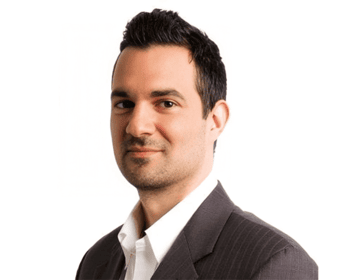
“This is really good guys. Excellent work on a tight deadline. I will continue to use you going forward and recommend you to others. Nice job”

“Thanks. It’s been a pleasure working with you, please use me as reference with any other Intel employees.”

“Thanks for sending the report it gives us a good global view of the Betaïne market.”

“Thank you, this will be very helpful for OQS.”
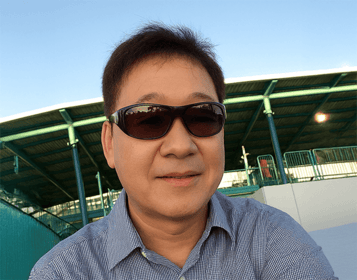
“We found the report very insightful! we found your research firm very helpful. I'm sending this email to secure our future business.”

“I am very pleased with how market segments have been defined in a relevant way for my purposes (such as "Portable Freezers & refrigerators" and "last-mile"). In general the report is well structured. Thanks very much for your efforts.”

“I have been reading the first document or the study, ,the Global HVAC and FP market report 2021 till 2026. Must say, good info! I have not gone in depth at all parts, but got a good indication of the data inside!”

“We got the report in time, we really thank you for your support in this process. I also thank to all of your team as they did a great job.”
